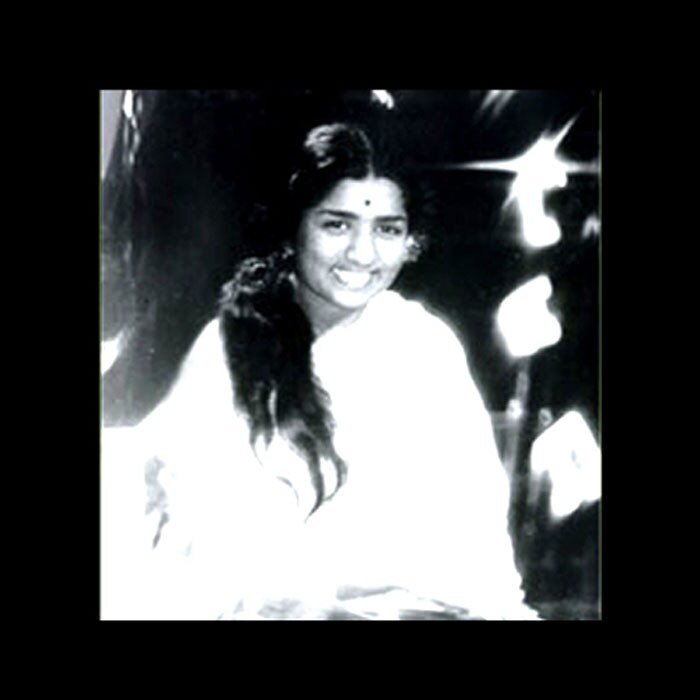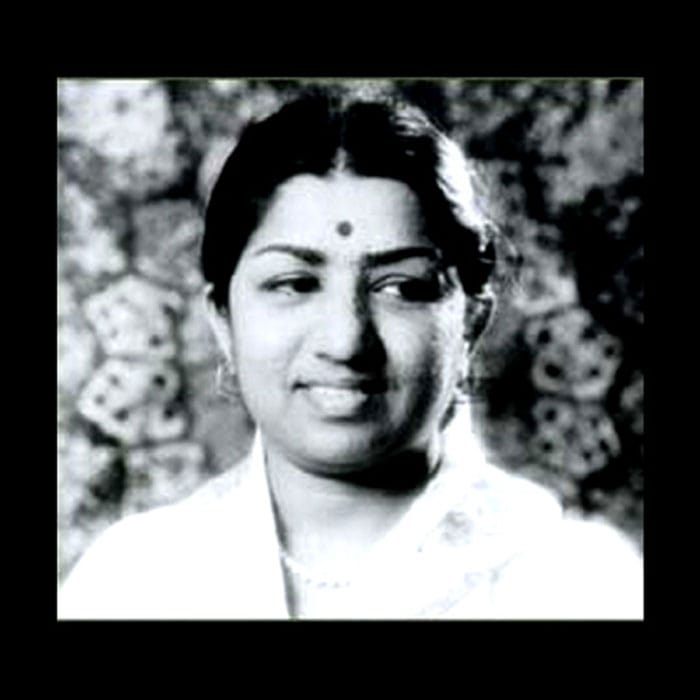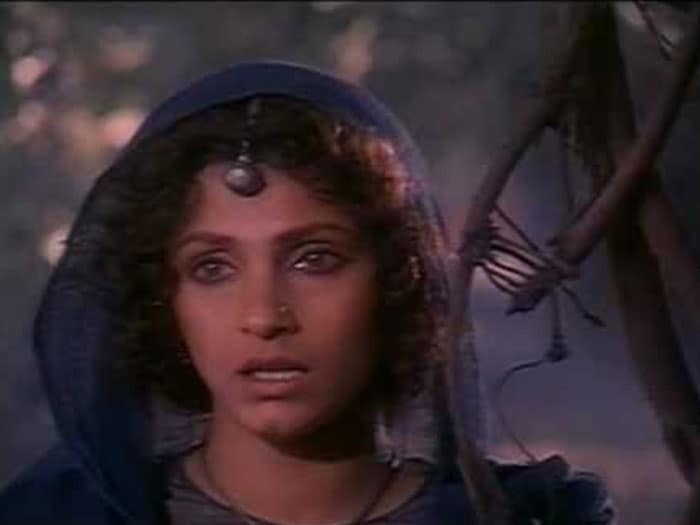It's Lata Mangeshkar's Birthday. The Song of The Nightingale@86
As the Nightingale of India turns 86, we take a pictorial look at her personal and professional life.
-
 Legendary playback singer Lata Mangeshkar has been the voice behind many actresses across decades. Her soulful voice has been part of the Hindi film industry for over 70 years.
Legendary playback singer Lata Mangeshkar has been the voice behind many actresses across decades. Her soulful voice has been part of the Hindi film industry for over 70 years.
As the Nightingale of India turns 86, we take a pictorial look at her personal and professional life. -
 Lata Mangeshkar was born on September 28, 1929, in a Marathi-speaking family in Indore. Her father, Pandit Deenanath Mangeshkar, was a classical singer and theatre actor, while her mother Shevanti was a homemaker.
Lata Mangeshkar was born on September 28, 1929, in a Marathi-speaking family in Indore. Her father, Pandit Deenanath Mangeshkar, was a classical singer and theatre actor, while her mother Shevanti was a homemaker.
The eldest child in the family, Lataji has three younger sisters - Asha Bhosle, Usha Mangeshkar and Meena Mangeshkar - and a brother, Hridaynath Mangeshkar. -
 After her father's death due to heart disease in 1942, 13-year-old Lata was forced to become the family's main breadwinner. She took to singing and acting to make ends meet.
After her father's death due to heart disease in 1942, 13-year-old Lata was forced to become the family's main breadwinner. She took to singing and acting to make ends meet. -
 She sang her first song - Naachu Yaa Gade, Khelu Saari Mani Haus Bhaari - for Vasant Joglekar's Marathi movie Kiti Hasaal (1942). Sadly, the song was dropped from the final cut of the movie.
She sang her first song - Naachu Yaa Gade, Khelu Saari Mani Haus Bhaari - for Vasant Joglekar's Marathi movie Kiti Hasaal (1942). Sadly, the song was dropped from the final cut of the movie.
However, she was offered a small role in Navyug Chitrapat's Marathi movie Pahili Mangalaagaur (1942), in which she sang the song Natali Chaitraachi Navalaai. -
 Lataji took Indian classical music lessons from Ustad Amanat Ali Khan but later started training under Amanat Khan Devaswale after her former teacher migrated to newly-formed Pakistan.
Lataji took Indian classical music lessons from Ustad Amanat Ali Khan but later started training under Amanat Khan Devaswale after her former teacher migrated to newly-formed Pakistan.
She also trained under Pandit Tulsidas Sharma, who was a pupil of Ustad Bade Ghulam Ali Khan. -
 With the film industry dominated by singers like Noor Jehan and Shamshad Begum, Lataji faced early rejection as her soft voice was labeled too high pitched and thin by many.
With the film industry dominated by singers like Noor Jehan and Shamshad Begum, Lataji faced early rejection as her soft voice was labeled too high pitched and thin by many. -
 She got her first major break with the song Dil Mera Toda from the movie Majboor (1948) but her first major hit was Aayega Aanewaala from the movie Mahal (1949), which was picturised on Madhubala.
She got her first major break with the song Dil Mera Toda from the movie Majboor (1948) but her first major hit was Aayega Aanewaala from the movie Mahal (1949), which was picturised on Madhubala. -
 During the 1950s, Lataji carved a niche for herself as an acclaimed singer in the Hindi film industry and her career took an upward swing.
During the 1950s, Lataji carved a niche for herself as an acclaimed singer in the Hindi film industry and her career took an upward swing.
During this phase, she collaborated with successful composers like S D Burman, Naushad Ali, Salil Chowdhury and Madan Mohan, and sang for movies like Baiju Bawra (1952), Shree 420 (1955) and Devdas (1955).
She won a Filmfare Award for Best Female Playback Singer for the song Aaja Re Pardesi from Madhumati (1958).
However, in the 1950s Lataji had a rift with S D Burman and the two didn't collaborate again until 1962. -
 There was no looking back for Lataji, who went on to sing hits like Jab Pyar Kiya Toh Darna Kya from Mughal-e-Azam (1960) and Ajeeb Dastaan Hai Yeh from Dil Apna Aur Preet Parayi (1960).
There was no looking back for Lataji, who went on to sing hits like Jab Pyar Kiya Toh Darna Kya from Mughal-e-Azam (1960) and Ajeeb Dastaan Hai Yeh from Dil Apna Aur Preet Parayi (1960).
On Republic Day in 1963, two months after the Indo-China war had ended, Lataji brought tears to the eyes of then Prime Minister Pandit Jawaharlal Nehru as she sang Aiye Mere Watan ke Logon celebrating the soldiers who had died.
She then sang for R D Burman's Bhoot Bangla (1965) and Pati Patni (1966), and also recorded several popular songs like Aaj Phir Jeene Ki Tamanna Hai, Gata Rahe Mera Dil from Guide and Hothon Pe Aisi Baat from Jewel Thief for S D Burman.
During this period Lataji recorded duets with Manna Dey, Mohammed Rafi, Kishore Kumar and bagged her second Filmfare Award for Kahin Deep Jale Kahin Dil from the movie Bees Saal Baad (1962). -
 In the 1970s, Lataji sang Chalte Chalte and Inhi Logon Ne from Meena Kumari's last film Pakeezah. These two songs are among Indian music's most beloved classics.
In the 1970s, Lataji sang Chalte Chalte and Inhi Logon Ne from Meena Kumari's last film Pakeezah. These two songs are among Indian music's most beloved classics.
She recorded many famous songs for R D Burman, but the highlight of the period was the song Beeti Na Bitai from Parichay, picturised on Jaya Bachchan and Sanjeev Kumar. Lataji won the National Film Award for Best Female Playback Singer for the song in 1973. -
 In the 1980s, Lataji sang for hit movies like Silsila (1981), Chandni (1989) and Maine Pyar Kiya (1989).
In the 1980s, Lataji sang for hit movies like Silsila (1981), Chandni (1989) and Maine Pyar Kiya (1989). -
 In the year 1990, Lataji launched her own production house and produced Gulzar's movie Lekin... (1990)
In the year 1990, Lataji launched her own production house and produced Gulzar's movie Lekin... (1990)
She went on to win her third National Film Award for Best Female Playback Singer for the song Yaara Seeli Seeli from Lekin. The song was composed by her younger brother Hridaynath.
During this phase, Lataji sung with almost every chart-topping singer like Sonu Nigam, S P Balasubrahmanyam, Udit Narayan, Hariharan, Kumar Sanu, Abhijeet Bhattacharya, Roop Kumar Rathod and Gurdas Maan.
She worked with A R Rahman and Jagjit Singh in the 1990s and featured on the soundtrack almost every Yash Chopra film.
The songs of Hum Apke Hain Koun (1994) and Dilwale Dulhania Le Jayenge (1995) were among her biggest hits of this time. -
 As the millennium changed, Lataji's star only got brighter.
As the millennium changed, Lataji's star only got brighter.
The best songs from Pukar (2000), Mohabbatein (2000), Zubeidaa (2001), Rang De Basanti (2006) and Lagaan (2001) all have Lataji's name written all over them. -
 Lata Mangeshkar has received many accolades and honours including the Padma Bhushan (1969), Padma Vibhushan (1999), Dada Saheb Phalke Award (1989), NTR National Award (1999), Bharat Ratna (2001) and Filmfare Lifetime Achievement Award (1993).
Lata Mangeshkar has received many accolades and honours including the Padma Bhushan (1969), Padma Vibhushan (1999), Dada Saheb Phalke Award (1989), NTR National Award (1999), Bharat Ratna (2001) and Filmfare Lifetime Achievement Award (1993). -
 The Guinness Book of Records listed Lata Mangeshkar as the most recorded artist in history in the year 1974. This was contested by Mohammed Rafi, who was claimed to have sung more songs than her.
The Guinness Book of Records listed Lata Mangeshkar as the most recorded artist in history in the year 1974. This was contested by Mohammed Rafi, who was claimed to have sung more songs than her.
However, in the year 2011, Asha Bhosle was officially acknowledged as the most recorded artist in music history by Guinness, thereby surpassing Lataji. -
 Here's wishing Lataji a very happy birthday and a great year ahead.
Here's wishing Lataji a very happy birthday and a great year ahead.
Advertisement
Advertisement
Advertisement
Advertisement